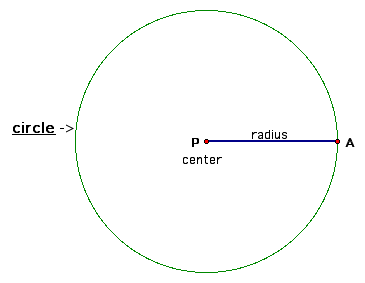

The word circle is derived from the Latin word circus, which means "ring."
A circle is the set of all points in a plane that are equidistant from a given point P called the center of the circle.
The radius of a circle is a segment that has the center as one endpoint and a point on the circle as the other endpoint.

Click here for an Intermath description of a circle.
You name a circle by its center point. The circle above is called circle P.
By the definition of a circle, any two radii of the same circle are congruent. If two circles have the same radius, then they are congruent circles. If two or more coplanar circles share the same center, then they are called concentric circles (Intermath description of concentric circles).
An arc of a circle consists of two points on the circle and the continuous part of the circle between the two points. The two points are called the endpoints of the arc.
A semicircle is an arc of a circle whose endpoints are the endpoints of a diameter. A minor arc is an arc of the circle that is less than a semicircle of the circle. A major arc is an arc of a circle that is greater than a semicircle of the circle.
You name minor arcs with the letters of the two endpoints of the arc. You name semicircles and major arcs with the letter of three points, the first and last letters are the endpoints and the middle letter is any other point on the arc.
Click here for investigations.